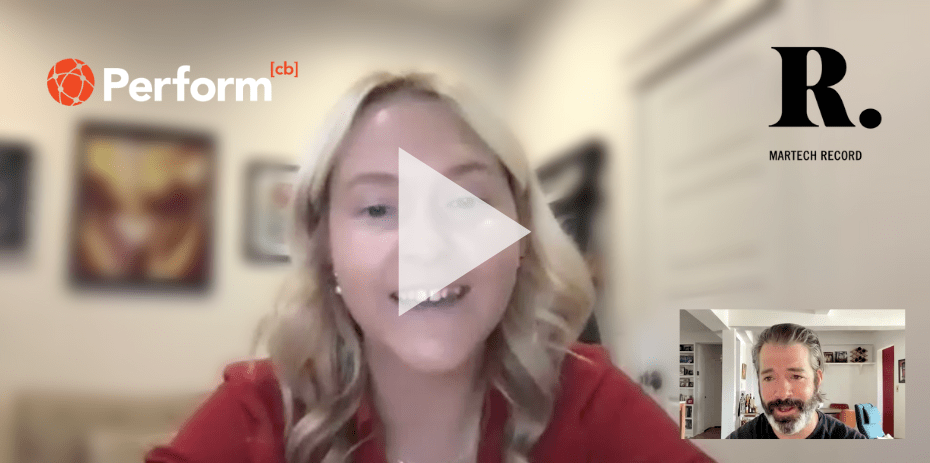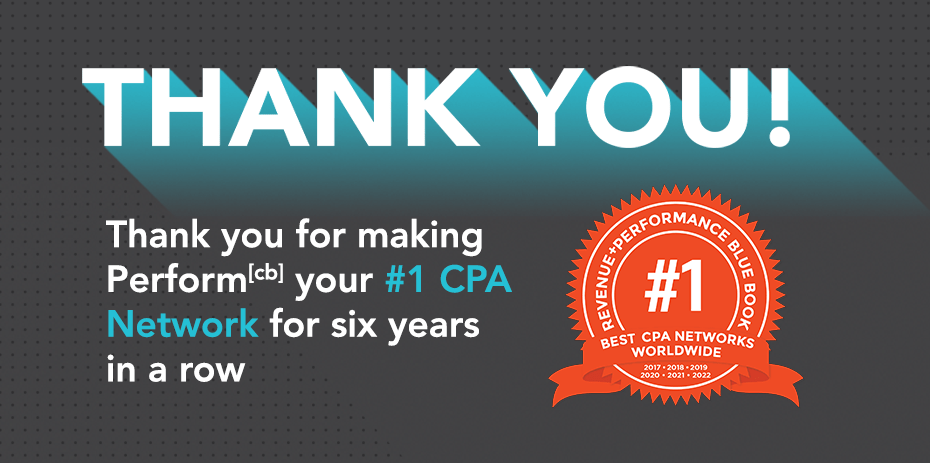Introduction
Though digital marketing opportunities are constantly coming, going, pivoting, and changing, there’s one strategy that has consistently proven it’s worth to ROI-minded marketers – and that’s Cost per Action (CPA) marketing.
CPA marketing, and the related affiliate and performance marketing models, have proven to be successful models for B2C marketers that are ready to move beyond awareness campaigns and into a customer acquisition strategy. With CPA marketing, you only pay after a user has completed a pre-determined desired action. Whether you have goals higher in the customer acquisition funnel, like promoting trial sign-ups or lead form submissions, or lower-funnel goals like increased sales or mobile app installs, CPA marketing provides a scalable and ROI-positive model for achieving your desired results.
$8.2B
US affiliate marketing spend estimated to hit $8.2 billion by 2022
68%
68% of marketers stated that paid advertising is ‘very important’ or ‘extremely important’ to their overall marketing strategy
Over ⅓
Over ⅓ of marketers feel affiliate marketing is one of the strongest forms of acquiring new customers
This guide will give you the background on CPA marketing, the decisions you must make to get started, and help you build the foundation of your strategy.
How Does Affiliate Marketing Work?
What is CPA Marketing?
Cost Per Action (CPA) Marketing is a marketing model in which a commission is paid when a user takes a specified action. It is also referred to as Cost Per Acquisition Marketing. Actions (or acquisitions) include a wide range of options for the marketer, including everything from clicks, to form fills, installs, purchases, and more. CPA marketing is also a broad term that encompasses numerous other Cost-Per pricing models, including CPS, CPL, CPI, CPE, and CPC.


Affiliate marketing definition
Affiliate marketing is the process by which an affiliate earns a commission by driving traffic to a marketer’s product or service. Affiliate marketing is known as a type of performance-based marketing, as a marketer only pays when there are genuine, measurable results.
Performance marketing definition
Performance marketing is an umbrella term that encompasses any kind of marketing that is performance-based. More granularly, performance-based marketing refers to marketing programs in which marketers (a.k.a. advertisers, brands, retailers, or merchants) pay partners (a.k.a. publishers or affiliates) either directly, or via a performance marketing network or agency when a specific action is completed.
To help differentiate from other marketing tactics, just remember
that with performance marketing, you only pay when your desired
action is completed (sale, lead capture, etc.). If there isn’t performance, you don’t pay.
Additional CPA Marketing Terms You Should Know
Affiliate:
An affiliate, also known as a partner or publisher, is a third-party individual or company that promotes another company’s product or service in return for a commission, and can exist anywhere along the performance marketing funnel.
Advertiser:
Also referred to as a marketer, brand, or retailer, an advertiser has a product or service to promote or sell. Advertisers utilizing CPA marketing have defined customer acquisition goals with a focus on metrics and continued campaign optimizations.

Interested in being a marketer
with Perform[cb]?

Entertainment apps like Spotify utilize CPA networks to find and partner with publishers to drive traffic bursts.
Read the full story on how Spotify leveraged CPA marketing to increase their app installs by 532% during the Super Bowl by
downloading the guide….
Defining Your Audience for a Customer Acquisition Campaign
Before delving into any marketing opportunity, having a clear understanding of who you’re targeting is necessary for customer acquisition strategy creation. Without knowing your audience, you will spend more time, more money on, and receive poorer results from your marketing efforts.
A hallmark of CPA marketing is its consumer targetability – so which consumers would you like to reach?
B2C Target Market
- Your target market is the group of consumers or users you want to reach with your marketing message. This is the audience you’ve identified as most likely to purchase your product or service. From an overall marketing perspective, it is important to fully understand your customers and their journey, including demographics and behaviors. However, with performance marketing, you only pay for conversions, so the most important metric to understand is CLV, or customer lifetime value.
CLV is defined as the total worth of a customer over the entirety of their relationship with your business. CLV is notable because it helps measure customer loyalty and satisfaction in a way that tangibly links to revenue. Over time, your customer lifetime value data becomes extremely powerful. When CLV is high, it will tell you where to continue pushing your efforts. If it’s low, it may well be a sign that it is time to reevaluate the products and partners you work with. CLV combined with performance marketing can be a powerful duo because the flexibility of performance marketing allows you to easily adjust pricing to directly impact CLV.

Download the Audience Checklist
Once you’ve defined your target audience and understand your competition, you can analyze which CPA marketing pricing model makes the most sense for your goals. With your target market in mind, you can then adjust payouts based on Customer Lifetime Value.
Even though you only pay for conversions with performance marketing, the more defined your target audience, the more efficient your marketing efforts will be, and the faster you will achieve ROI.
Selecting Your CPA Pricing Model
Today’s digital marketer has more options at their fingertips than ever before for user acquisition. Long gone are the days when you were limited to choosing between paying for views or clicks, as today’s performance marketing world has evolved into one of endless opportunity.
Which CPA Pricing Model Should I Use?
While in some instances, paying for views or impressions is still appropriate, the majority of performance marketers find themselves considering these common pricing models: CPA, CPI, CPE, CPL, CPS and CPC.

CPA – Cost per Action/Acquisition
A style of performance marketing in which marketers (advertisers) only pay partners (publishers or affiliates) when a new user is acquired or a specific action is completed. An action can be anything from a form fill, to a subscription, to a download, to a purchase, etc., as agreed upon by the marketer.
CPA marketing encompasses numerous other customer acquisition pricing models.

CPS – Cost per Sale
A pricing model that pays affiliates when a customer purchases a product or service at full cost, or via cash-on-delivery. With this model, the advertiser only pays when revenue is driven.

CPL – Cost per Lead
This pricing model pays when a user has provided personal details as stipulated by the marketer. Common personal details collected include name, email, and/or zip code. With this model, lead generation is the desired goal.
You can use this CPA pricing model when you want to generate leads, like QuoteWizard, who saw a 92,000% increase in leads

CPI – Cost per Install
Specific to mobile apps, the CPI marketing pricing model pays publishers when a user installs and opens an app. It is one of the most widely used models for mobile user acquisition campaigns.

CPE – Cost per Engagement
Across the performance marketing industry, CPE is often used for post-installation events within mobile apps. At Perform[cb], this model pays when a user has completed an action within an app after install, which can include events such as a registration or in-app purchase. This model is only applicable to app-install offers at Perform[cb].
If you’re looking for CPI or CPE, make sure that you have a mobile attribution platform in place before applying to a network. An attribution platform tracks where your users are coming from and the conversion actions they’ve taken, then aggregates the information.

CPC – Cost per Click
One of the most straightforward pricing models, CPC pays when a user has clicked on an ad and has been redirected to the marketer’s desired CPA landing page.
CPA Pricing Model At A Glance
Choosing an Affiliate Network or Affiliate Agency
What is a CPA Affiliate Network?
An affiliate network is a company that connects marketers (brands or their agency representatives) with affiliates to promote the brand’s goods or services to consumers or customers on a pay-per-results model. A CPA Affiliate network is an affiliate network that uses any combination of the CPA pricing models as a means of payment for an action.
What is an Affiliate Agency?
An affiliate marketing agency manages affiliate promotions, signups, payouts, and affiliate relationships on behalf of a marketer.
You may also see affiliate marketing agencies classified as affiliate OPMs, or outsourced program management providers.
How to Choose an Affiliate Network?
There are several factors that go into choosing an affiliate network and those factors can shift depending on the marketer’s goals. However, the four primary factors that go into every marketer’s decision are distribution, technology, compliance, and payment. Read more about these factors and the questions you need to be asking here!
Perform[cb] has been recognized as the #1 CPA Network Worldwide since 2015.
Look for a network that has longevity and good reviews from both advertisers and affiliates.
How to Choose an Affiliate Marketing Agency?
Choosing an agency to manage your affiliate marketing program can be easy if you focus on these three factors: their strategy, affiliate relationships, and reporting & data analysis. Does the agency offer your brand a flexible and proactive affiliate program strategy that is customized to your needs? Do they have quality publisher/affiliate relationships with proof to back their claims? What tools and processes do they use to provide insightful reporting? Will they work as an extension of your internal team to help hit your KPIs? Read more about these factors and the questions you should be asking here!

Want to learn more about the agency services marketers receive with Perform[cb] Agency?
Many marketers initially set out to manage their own affiliate program, but quickly learn that an agency with vast industry experience will be more effective. A reputable CPA marketing agency should be willing to review your program and provide you with strategic recommendations as to how they can help you help it grow.
Measuring Success: CPA KPIs
To get the most of your CPA marketing program, it’s important to set forth clear KPIs and measure their performance. By tracking and measuring key metrics, you can determine your CPA program’s level of success.
Measuring Performance Marketing Results
Key Performance Indicators (KPIs) to Consider:
Conversion Rate (CR)
The rate at which sales are generated or leads are acquired after a click on an advertisement. The CR helps show the overall effectiveness of your CPA promotional methods as well as the quality of the user experience.
Average Order Value/ Average Order Size (AOV/AOS)
The average order value can be used to help measure the average revenue per order. It is also an important metric for comparing your CPA marketing to your other marketing methods.
Reversal Rate
Also known as a chargeback rate, this is your gross sales vs. net sales number. If there’s a high reversed sales rate, it could indicate that your brand or service is not being represented correctly to your target audience.
Return on Investment (ROI)/ Return on Ad Spend (ROAS)
These calculations assess the overall effectiveness of your CPA marketing campaigns. They compare how much you spend to how much revenue you generate from that spend.
Average Order Value/ Average Order Size (AOV/AOS)
Sales or actions that result from a marketing activity that the marketer would not have achieved without that activity taking place. In terms of CPA marketing, incremental sales are conversions (orders, installs, subscriptions, etc.) that would not have been achieved if the specific marketing or promotional activity had not taken place.
Keep in mind:
World events may require you to pivot your KPIs. Make sure your marketing plan is prepared.
Diagnosing Underperforming KPIs
Ensure that your supply chain or customer support team can be scaled quickly once momentum has begun. Things can take off quickly with affiliate marketing and you don’t want to risk brand reputation by not being able to fill orders or follow up on leads.
Long Term Benefits of Affiliate Marketing
Only Pay for Conversions
- One of the greatest benefits of CPA marketing for B2C marketers is that it’s based on the principle that marketers only pay for true results. Many traditional marketing methods that utilize impressions or views as a measurement of success, but these are measurements that cannot be directly tied to conversions. CPA performance marketing is rooted in strategic, commission-based affiliate-advertiser relationships where payouts are placed solely on legitimate conversions as defined by the marketer.
CPA marketing does not require a large investment of time or money, and a network with innovative technology and experienced account managers can do much of the work for you
Lowered Risk
- Because payments are only made post-conversion, both network and affiliates can only succeed by driving non-fraudulent traffic. It is this heightened level of accountability in performance marketing that gives marketers greater protection than other forms of digital marketing.
- There’s also a lowered budgetary risk, in that marketers are not locked into spending money on tactics that don’t perform. By only paying when a desired conversion occurs, marketers can avoid using ad dollars on placements with little to no proven value.

No matter how uncertain the landscape, the performance-based nature
of CPA Marketing will always provide a reliable way to increase conversions, and provide a protective barrier for marketers’ budgets.
Greater Data Transparency
- CPA marketing has the ability to provide B2C marketers with some of the most detailed consumer journey data in the digital marketing space. This is especially true when working with a reputable affiliate network or agency that has advanced platform technology, in addition to human optimizations and management. Being equipped with better data means marketers can not only continuously optimize their affiliate campaigns, but they can also apply learnings from this data to their other advertising efforts outside of CPA affiliate marketing.
- Data transparency is especially important for optimizing lead generation campaigns, as there is no guarantee that a lead will result in a sale. CPA marketing provides marketers with data that allows them to hone in on the attributes of a more qualified lead, then adjust payouts appropriately. Read more about the benefits of data transparency in lead gen here.
High ROI
- CPA marketing’s ability to provide B2C marketers with a high ROI is thanks to a culmination of all its various benefits. Because you’re working on a model where you pay commissions for sales or other desired actions, rather than paying for traffic, you automatically set yourself up for a higher ROI than you’d have with impression-based marketing channels. CPA marketing also allows you to continuously optimize towards higher ROI, thanks to its sophisticated technology, greater affiliate transparency, and specific measurable results.

Ready for high-volume, cost-effective, customer acquisition?
Become a marketer with the #1 CPA Network today.
Conclusion: CPA Marketing Next Steps
While affiliate marketing may have had its roots in Nutra and Dating (and those continue to be strong even 25+ years later), Lifestyle, Entertainment and Financial brands have made performance marketing a cornerstone of their marketing plans after years of reaping the benefits of the channel.
A well-known photo printing app has found long-term success with the CPA affiliate marketing channel thanks to its high level of transparency and continuous ability to optimize towards higher ROI. When this app became a Perform[cb] client in 2016, they were looking to increase app installs on a CPI model. As the client’s goals shifted over time, Perform[cb] pivoted the campaign to a CPE model to align with the new goals. Since transitioning to the CPE model, the client was able to drive over 130,000 first-time in-app purchases, and has remained a marketer with Perform[cb] for continued campaign optimizations and management. Find the case study here.
Ready for high-volume, cost-effective, customer acquisition? Become a marketer with the #1 CPA Network today.
Now it’s time to promote your product or service with CPA marketing, and there are a few things you can do to speed up the process of joining an affiliate network or employing an affiliate agency. Check out these tips from our very own Perform[cb] team of marketer representatives on what to prepare before you apply to a network or agency.
Ready to learn more? Download the full PDF to reveal bonus content including next steps for working with a CPA Affiliate Network or Agency














